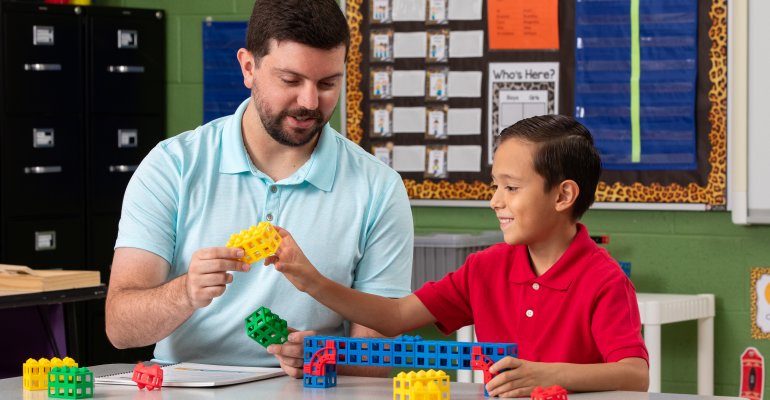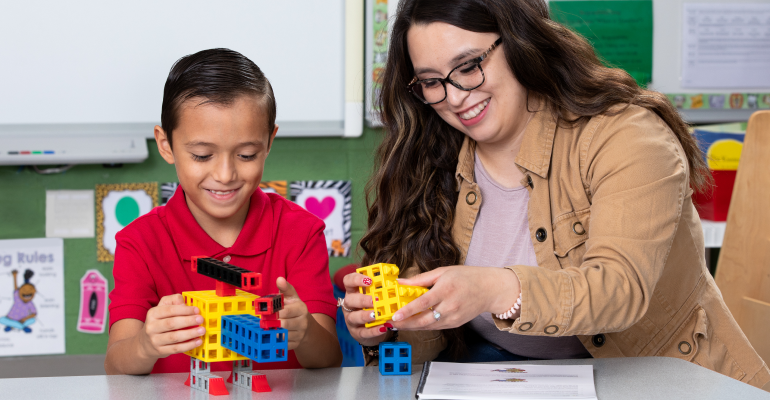
How to create an effective after-school program for your community and enhance the STEM ecosystem with out-of-school educational programs.
Learning goes far beyond the classroom. Our communities, activities, and interactions outside of school hours have been long-time contributors to how young learners interact with and view the world around them. After-school programs, specifically, have contributed to academic performance and achievement, provided additional community support, and helped working families provide a safe space for their children.
Students spend less than 14% of their waking hours in school each year, so why aren’t we utilizing after-school programs more?
The NAESP estimates that the average child spends 13.36% of their time in school from elementary to high school. That leaves most of their time to activities outside the structured school setting and the curricula within it. To limit STEM exposure to the fraction of classroom time dedicated to STEM subjects within school hours is to miss an opportunity of mentoring STEM-fluent students within a comprehensive STEM ecosystem.
In STEM education, after-school programs offer an immersive experience for students to practice their STEM skills beyond the classroom and experience real-world applications of Science, Technology, Engineering, and Mathematics.
The Role of After-School STEM Programs
Learning STEM is like learning a language. The more exposure one gets, the more fluent one becomes. Just like language doesn’t exist in a vacuum, STEM opportunities are everywhere around us. Giving young learners ample exposure to these learning opportunities outside of the classroom prepares them for the real-world applications of science and technology.
After-school programs can be a powerful tool to bridge the gap between school hours and the real world. These programs are not intended to replace traditional classroom curricula. Instead, they build on what is already being taught and help sustain the journey of STEM education in a valuable informal setting.
In this way, after-school programs are a complement to a student’s classroom education—not a replication of it—and provide additional opportunities to practice STEM fluency and engage with the world in new and dynamic ways.

The STEM Education Ecosystem
What does the STEM ecosystem look like? A STEM education ecosystem encompasses all formal and informal settings in which students are exposed to and can interact with STEM concepts. This includes:
- Formal Education: classroom STEM curricula, STEM enrichment, and all STEM activities within school hours.
- Community Settings: after-school programs, clinics, summer programs, libraries, science centers, museums, and other structured educational entities outside of the traditional classroom setting.
- Informal Education: at-home play, home STEM kits and activities, and all learning opportunities for STEM subjects outside of structured settings.
After-school programs have their own role in the STEM education ecosystem. They help maximize the impact of the community’s educational system by providing a learning environment that is rich in interactive and immersive experiences for students to apply STEM in new scenarios. By using the hours outside of school, students of all backgrounds have the opportunity to engage in meaningful high-quality STEM education.

The Benefits of STEM After-School Programs
The less formal community STEM learning environment of out-of-school programming creates unique opportunities for students to practice their STEM skills outside of the classroom, along with the following benefits:
-
Doing STEM: A Focus on Activity
STEM education is best learned through hands-on immersive experiences. By engaging with STEM through “doing” activities (rather than just learning facts), students are relieved of the pressure of “knowing” concepts which are known to cause anxiety in young learners and potentially halt their pursuit of STEM knowledge.
For complete STEM fluency that carries on through higher education and adulthood, young learners need opportunities to work with their hands and grasp scientific concepts physically. After-school programs provide an informal setting to gain additional exposure and practice in these concepts.
The hands-on activities common in STEM education can take an ample amount of time, so it’s common for the traditional classroom setting to provide a limited amount of time dedicated to hands-on learning. However, after-school STEM programs can be focused on these applied learning activities and give students time to experiment and explore these concepts on their own.
This kind of exposure and practice allows students to creatively engage with STEM concepts in their own time and pace.
-
Encouraging Repetition: Learning How to Practice
Just like becoming fluent in a language, STEM fluency requires regular repetition and immersion into new experiences, new uses, and new opportunities to practice what you’ve learned. This immersive repetition goes beyond memorization and vocabulary but provides context, richness, and complexity to what students are learning in the classroom.
The more exposure students get, the more embedded the language and skills of STEM fluency become. That’s why repetition plays such a key role in STEM education. It also introduces students to the practice of the important role of repetition in all experimental sciences.
After-school programs offer the perfect opportunity to practice in a new setting and foster a deeper understanding and connection to STEM through divergent learning experiences.
-
An Opportunity to Follow the Spark
After-school STEM programs can provide high-quality education to supplement classroom instruction and give students a chance to pursue their passion or spark even further.
In the classroom, educators are responsible for teaching a classroom of students with a range of interests and learning styles. Their role heavily revolves around reaching curriculum milestones for their diverse classroom, which can be limiting for some students.
Traditional STEM curricula might not be enough for young minds who show a keen interest in STEM subjects, but after-school programs can provide more challenging and exciting opportunities specially designed for STEM.

-
Approachable STEM Mentorship
After-school programs typically have a lower student-to-educator ratio, so students of all learning levels and abilities can get more individualized instruction from a STEM mentor. This gives students access to more activities, concepts, and practice than they might get at home or school.
Because of community partnerships and sponsorships available to after-school programs, students can also benefit from STEM mentors who specialize in the STEM subjects. These might be community leaders, educators from local libraries, science centers, or museums, or volunteers from professionals in the STEM field.
This approachable access to STEM mentorship with versatile representatives exposes students to a wide range of roles within science, technology, engineering, and mathematics. In these after-school programs, young learners are more likely to meet STEM mentors they can identify with and build genuine excitement around STEM through mentorship beyond their daily classroom teacher.
-
Building a Comprehensive STEM Ecosystem
Learning, and especially STEM learning, takes place over time and in many different settings. A learning ecosystem comprises various settings that all enhance a comprehensive educational experience.
These settings include libraries and museums, the traditional classroom, home life, culture and lifestyle, and the communities within each. Altogether, these places create an ecosystem that can help a student thrive or can discourage a child if several parts of their ecosystem aren’t supportive of their interests or individual learning style.
After-school STEM programs provide a safe, supportive, and engaging environment that can bring multiple aspects of the STEM ecosystem together through collaboration. Local community members, mentors, and educational resources like libraries and museums can provide safe learning environments that advocate for a child’s STEM education.
These out-of-school programs act as a hub between communities, social groups, and educational systems to provide a diverse and inclusive ecosystem to support young learners.
-
Providing Access: Closing the Cap
After-school programs have the opportunity to close the gap between the quality of education between low-income households and more affluent households. This is partially due to less disparity within after-school programming. In a report by the Afterschool Alliance, parents in high-poverty communities reported after-school programs in their community being very similar to the programs offered in more affluent communities.
Because after-school programs often involve parties outside the traditional school system, they can often find support from nonprofit organizations, community members, libraries, museums, and other educational resources to create effective programming for youth. Without budget or administrative constraints, after-school programs can be run independently and provide their own curriculum, often providing modern, current, and effective resources to students of all backgrounds.
Programs like Kid Spark’s STEM Equity Grant Program also help provide lab kits, curriculum, and training so that every student has access to STEM education. These points of access work to disrupt the pattern of educational inequity and remove barriers to STEM education.
How to Start an After-School STEM Program
To contribute to your local STEM ecosystem, start by working with the community. The most effective educational programs are connected to the ecosystem grid, designed for convergent and divergent learning, and provide age and grade-level appropriate curriculum.

1. Engage Your Community
Connect with local community members, resources, establishments, and STEM mentors who can help you provide a comprehensive after-school program with longevity. These connections can help you find the right space, collaborate with existing and trusted educational systems, and find teachers, mentors, and educators to support the program.
2. Employ Convergent and Divergent Learning Opportunities
Both convergent and divergent learning is essential in any STEM education. After-school programs can lean more heavily into divergent learning opportunities where participants can engage in hands-on learning activities to explore STEM concepts creatively, but tying these activities together through convergent instruction helps students build their STEM fluency.
Kid Spark Education’s comprehensive STEM programs are one way to easily incorporate both convergent and divergent learning opportunities into an after-school program. Their programs come complete with lesson materials, reusable engineering materials, and numerous activities for students to apply STEM concepts in many different ways. Because they also provide online learning resources for educators, students benefit from well-informed instruction from confident STEM mentors who can readily engage with students in STEM activities.
3. Use Curriculum for Specific Age and Grade Levels
Depending on the structure of your after-school program, it may be helpful to pick one age group or grade level so you can provide a relevant and appropriate grade-level curriculum. (Feel free to check out our blog for specific grade-level curriculum ideas.)
Other after-school programs might combine multiple grade levels, in which case, you’ll want to incorporate multiple levels of activities to keep all students engaged and interested. Try setting up multiple stations with similar age groups solving puzzles and finding creative solutions together. This keeps older students challenged without leaving out younger learners.
Starting an after-school STEM program doesn’t need to be complicated. Your community is likely already full of members who want to support the next generation of young learners for future opportunities in the world of STEM.
Remember to utilize all the resources available to you in your STEM ecosystem and community—including traditional classroom educators. The more diverse your after-school program is in staff, materials, activities, subjects, and technology, the better. Your after-school program has the potential to inspire students with new opportunities to apply their innate skills of creativity. Keep it fun, engaging, and full of exploration for all learners.
How Kid Spark Education Can Help
If you’re interested in starting an after-school STEM program, we’re here to help! Kid Spark provides a library of curriculum ideas and lab kits to help you devise lesson plans that are age-appropriate, challenging, and comprehensive.
These resources are specially designed to help students develop STEM fluencies that they can continue to build and develop throughout their educational careers. Scientifically backed, our lab kits create dynamic learning experiences for youth K-12 and provide support and training for educators, so they are well-equipped to be STEM mentors and lead students to success.
In addition to the curriculum, lab kits, and grant equity programs to provide equal access to STEM education, the Kid Spark team includes STEM Program Specialists who can help you design your own Kid Spark STEM program that’s backed by the power of science.
Our Program Specialists can assist you in creating a STEM program that fits your community's STEM ecosystem and empowers young minds with the power of STEM. Contact us today to learn more about bringing an after-school STEM program to your community.
.png?width=1270&height=453&name=Copy%20of%20Kid%20Spark%20Logo%20(Horizontal%20-%20Full%20Color).png)